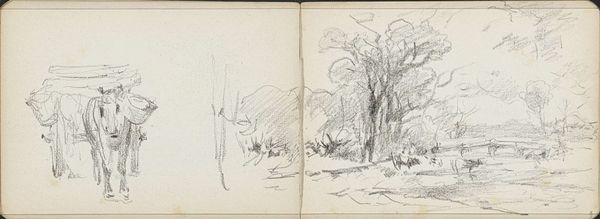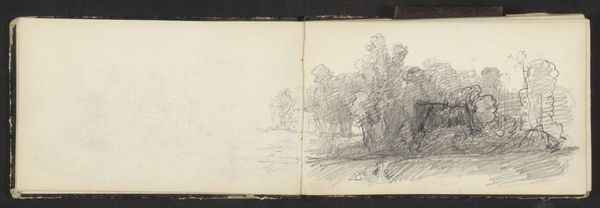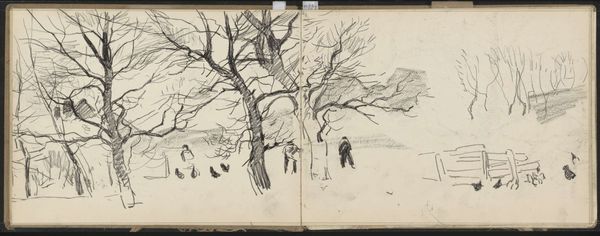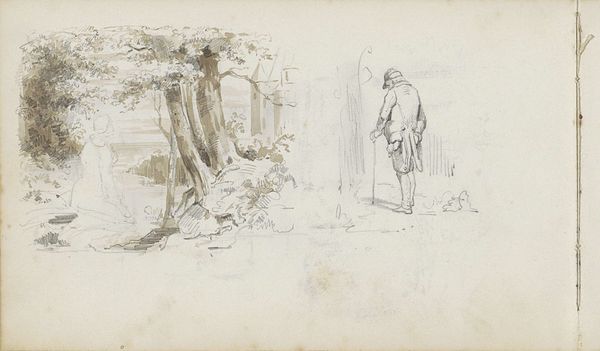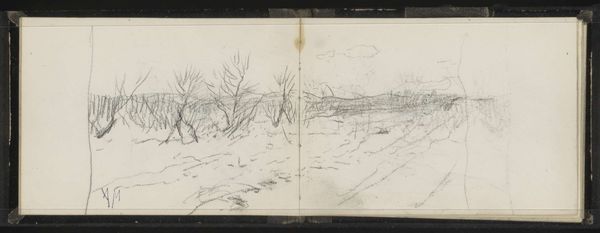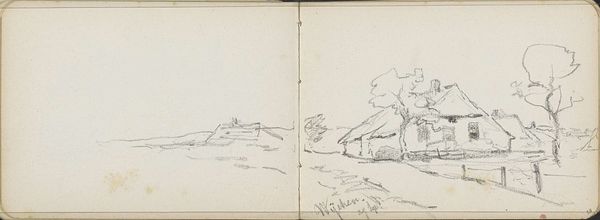
drawing, pencil
#
drawing
#
amateur sketch
#
light pencil work
#
impressionism
#
sketch book
#
incomplete sketchy
#
landscape
#
personal sketchbook
#
road
#
child
#
sketchwork
#
ink drawing experimentation
#
pen-ink sketch
#
pencil
#
sketchbook drawing
#
genre-painting
#
sketchbook art
#
realism
Dimensions: height 158 mm, width 247 mm
Copyright: Rijks Museum: Open Domain
Curator: Willem Cornelis Rip's 1876 double-page pencil drawing, "Figuurstudies en de Kleiweg bij Rotterdam," presents a fascinating juxtaposition of rural life sketches. Editor: It feels immediate, like catching a glimpse into another world. The light pencil work almost vanishes into the paper, doesn’t it? Curator: Exactly! On the left, we see these figure studies—quick sketches of women and children, capturing their postures and attire. Then, our gaze is drawn to the right, where the artist rendered a landscape with figures on a road. Editor: The road, likely a vital trade route. See the wheel ruts so deftly suggested by the artist. A humble material leaving it’s mark—a record of production and exchange right there. It is almost meditative in its depiction of rural infrastructure. Curator: Yes, that daily toil rendered so beautifully with simple lines. I think what draws me is the glimpse into Rip’s process. It’s a sketchbook, after all – intensely personal, a gathering of thoughts. The unfinished nature invites us into his artistic musings, that exploratory, anything-can-happen phase of image making. Editor: And a materialist reading of these drawings invites consideration of their commodity status. The sketches—were they preparation for a larger, commissioned piece, for example? Rip's practice is then connected to broader questions of artistic labor and economy. Curator: Oh, absolutely. He has these studies side by side, it almost like he’s practicing ways of observing the world, how best to translate what he sees onto the page, maybe with his customer in mind! Editor: Precisely! Each mark, each figure is connected not just to the landscape, but the forces that shape it. The road's use, the material needs of the travelers using it. It’s all embedded. Curator: Thinking about the relationship of labour and trade, maybe that road suggests a link to a larger, possibly global network… Editor: Networks dependent on something as modest and universal as a pencil and paper... Curator: Indeed. It makes me reflect on how an everyday material combined with individual vision becomes something that still captivates us today, centuries later. Editor: Yes, connecting labor, landscape, and artistic intention! It’s remarkable what these unassuming pages can reveal.
Comments
No comments
Be the first to comment and join the conversation on the ultimate creative platform.
